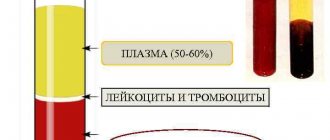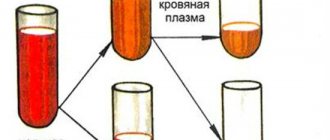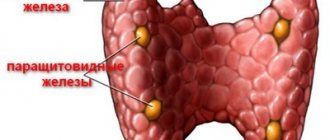Home — For the public
- Map of medical organizations
- Vaccination
- Clinical examination
- Fluorography
- Addresses and opening hours of clinics
- Emergency rooms
- Oncology
- Where to take an HIV test
- Healthy child's office
- Services
- Prevention of CVD
- Disease Prevention
- World Patient Safety Day
- Newspaper "Medical News"
- specialist
- School of Health
— Disease prevention
- HIV infection
- All about vaccination
- All about proper nutrition
- Hepatitis
- Flu
- Dementia
- Schoolchildren's health
- STD
- Tick-borne encephalitis
- Whooping cough
- Measles
- Legionellosis
- Meningococcal infection
- Oncology
- Acute intestinal infection
- Pediculosis
- First aid
- Pneumococcal infection
- Pneumonia
- Prevention of rabies
- Dependency Prevention
- Rotavirus infection
- Diabetes
- Cardiovascular diseases
- Injuries
- Tuberculosis
- Tularemia
- Physical activity
- Obstructive pulmonary disease
- Exotic infections
- Ecology
- Why is swimming in ponds dangerous?
— Oncology — Checking blood for tumor markers
Oncological diseases take second place after cardiovascular pathologies among the causes of death of patients in Russia. Negative statistics are associated with late detection of pathology. According to experts, with the help of early diagnosis, the survival rate of cancer patients can be doubled. There are plenty of methods for this.
Among the most common methods of early diagnosis of cancer is a blood test for specific chemical compounds - tumor markers. Based on its results, it is impossible to accurately determine whether a person has cancer or not. The diagnostic value of the study is the ability to suspect the initial stage of the disease by continuing the study using clinical methods.
What are tumor markers
Tumor markers are specific biomolecules produced by pathologically altered cancer cells. More often they are protein compounds, but can have a different nature: enzymatic, hormonal or receptor. Most of these markers are also synthesized by healthy cells of the body, but in much smaller quantities.
The term “tumor marker” was first introduced in the 60s of the last century by domestic scientists Harry Abelev and Lev Zilber. While conducting research, they discovered that an increase in the AFP protein produced by the placenta during pregnancy is characteristic of malignant liver tumors. This marker was the first to be included in clinical practice in tumor research.
Today, more than two hundred types of specific compounds have been identified, but only about twenty are subject to analysis.
Markers are found in various biofluids at the initial stages of the formation of malignant cells, in the preclinical (asymptomatic) stage of tumor formation. Connections are divided into two types. Markers of high specificity are highly likely to identify a specific disease, while markers of low specificity are characteristic of a number of different pathologies.
Based on the probable location of the tumor, experts identify tumor markers:
- mammary gland;
- testes;
- Bladder;
- pancreas;
- liver;
- esophagus;
- stomach;
- thyroid gland;
- lungs;
- skin;
- prostate gland;
- ovaries;
- uterus;
- intestines.
Doctors are ambivalent about this classification. This is due to the fact that no ideal marker has been identified to date. None of them has 100% specificity, allowing one to unambiguously identify cancer of a specific organ.
Scheme for the use of tumor markers
- At the start of treatment, the level of all tumor markers that are informative for a given tumor is examined and markers whose levels are elevated are noted. Then only these are evaluated.
- After surgery, their levels are examined after 3-4 weeks (before discharge). Elevated levels of any of them after surgery should be alarming.
- If there is a risk of disease recurrence, tumor markers are examined every 4 months in the first year after surgery. Two consecutive increases in their level with a break of 1-2 months is a bad prognosis for relapse.
- During conservative therapy, the level of tumor markers is examined before the start of treatment and before each subsequent course of therapy.
Why do blood tests for tumor markers?
Analysis for tumor markers is often used as an evaluative test to determine positive (or negative) dynamics in cancer therapy. Based on its results, relapse can be prevented.
Markers allow you to:
- confirm or refute the assumptions of preliminary diagnostics;
- notice the formation of metastases in the absence of other symptoms;
- evaluate the effectiveness of the prescribed therapeutic course.
The study is not recommended as an independent diagnosis due to the large number of false positive (false negative) results. But, in combination with other methods, it helps to identify cancer at an early stage.
Limitations of the use of tumor markers
- Many tumor markers may be elevated in people with non-cancerous conditions or diseases.
- Not all tumor markers are specific to a specific type of cancer; many characterize the type of cancerous tissue rather than the organ.
- Those that are specific to a particular type of cancer are not elevated in every person with that type of cancer.
- Not every cancer has its own tumor marker.
As a result, the determination of tumor markers provides only additional information and is considered together with other tests.
What does deviation from the norm indicate?
In oncology, the stage of the disease is diagnosed based on the number of specific proteins, and the probable location of the tumor is determined based on their type.
In addition to cancer, compounds are detected in the presence of cysts, infections, inflammatory processes, and other benign pathologies in the body.
Attention: tumor markers are present in small amounts in the blood of healthy people.
We will provide data on the normal content of such substances in the body and the expected problems if deviations from it are detected.
| tumor marker | maximum standard value | probable location of the tumor | possible other diseases |
| PSA | 4 ng/ml | prostate | infectious prostatitis; adenoma. |
| SA-125 | 30 IU/ml | female reproductive system; pancreas; Gastrointestinal tract; respiratory organs (rare). | endometriosis; ademomyosis; inflammation of the genital organs; liver diseases. |
| hCG | for men - 2.5 IU/ml; 5 IU/ml - for women | placenta; ovaries; testicles. | |
| SA-242 | 30 IU/ml | pancreas; rectum and colon. | inflammation of the gastrointestinal tract; pancreatitis. |
| REA | 5 ng/ml | prostate, thyroid or mammary glands; stomach; liver; bone; reproductive system; stomach. | liver pathologies; intestinal polyposis; pathology of the pancreas; Crohn's disease; tuberculosis; pneumonia; cystic fibrosis. |
| Cyfra 21-1 | 3.3 ng/l | bladder; bronchi; lungs; mediastinum. | inflammation of the kidneys or liver; fibrosis of lung tissue. |
| SA-19-9 | 30 IU/ml | liver; gallbladder; stomach; bladder; reproductive system. | cholecystitis; cholangitis, cholelithiasis; cystic fibrosis. |
| SA-15-3 | 38 IU/ml | breast; Gastrointestinal tract; liver; female genital organs (late stage). | cirrhosis; benign breast tumor; autoimmune processes. |
| B-2-MG | from 670 to 2140 ng/ml | hematopoietic system | autoimmune pathologies; inflammatory processes; liver diseases; renal failure. |
| CA 72-4 | 6.9 U/ml | stomach; ovaries; uterus; pancreas or mammary gland. | gynecological inflammation; cysts; cirrhosis; autoimmune disorders. |
Separately, the AFP marker should be noted. In gynecology, it is used to assess the state of pregnancy. In oncology, it signals the possible development of cancer of the liver, ovaries, breast, bronchi and lungs, and gastrointestinal tract.
For pregnant women, the AFP norm by week is as follows:
- up to 12 - less than 15 U/ml;
- 13-15 - from 15 to 60 U/ml;
- 15-19 - from 15 to 95 U/ml;
- 20-24 - from 27 to 125 U/ml;
- 25-27 - from 52 to 140 U/ml;
- 28-30 - from 67 to 150 U/ml;
- 31-32 - from 100 to 250 U/ml.
Attention: exceeding these indicators may indicate pathologies in the development of the fetus.
In addition, elevated AFP is a sign of hepatitis or cirrhosis.
Based on the data presented in the table, we can conclude that deviations in the indicators of one or another tumor marker indicate the likelihood of developing a number of different diseases. It is not possible to make a diagnosis based only on the content of specific proteins in the blood. To confirm (or deny) the presence of a cancerous tumor in the body, additional diagnostic procedures will be required.
Tumor markers. general information
The term “tumor markers”, or tumor markers (TM), combines a wide range of different high-molecular substances produced by tumor cells. This may include fetal proteins, hormones, enzymes, antigenic determinants detected using monoclonal antibodies, fragments of immunoglobulin molecules, etc. OMs are formed inside or on the surface of tumor cells, or under the influence of the tumor they are induced in other cells. One way or another, OM enter the bloodstream and can be quantified in peripheral blood or other biological fluid (urine, cerebrospinal fluid, pleural fluid, cyst contents, ascites, etc.).
Currently, more than 200 OMs are known, but only a few of them are of interest for clinical practice. There is no uniform classification of OM. From a clinical point of view, it is convenient to subdivide them according to the location and histological structure of the tumor. Table 14 provides information on the use of the most significant OMs in practice.
OM are widely used in the clinic. In combination with other research methods, they provide real assistance in diagnosing a malignant neoplasm, assessing the prognosis of the course of the disease and the radicality of the operation, early detection of relapses, monitoring the effectiveness of therapy, as well as obtaining additional information.
Diagnosis of cancer. Ideally, OM should be produced only by malignant tumor cells, and therefore should not be present in healthy people or in individuals with benign pathologies. In fact, no tumor-specific marker has been found.
The diagnostic significance of OM is determined by three characteristics: diagnostic sensitivity, diagnostic specificity and discriminatory level or discriminatory concentration (DL, DC) (Fig. 7).
UL is the permissible upper limit of OM concentration in healthy people and in patients with benign diseases. All marker values that exceed the DL are considered positive or pathologically elevated.
Diagnostic specificity of OM is the frequency of true negative test results in a group of healthy individuals and/or individuals with benign pathologies, expressed as a percentage. Ideally, it should be 100% (Fig. 7, a), but in reality (Fig. 7, b) OM is always detected in a certain proportion of people who do not have cancer pathology, i.e. registration of false positive results. The lower the percentage of such results, the higher the specificity.
Diagnostic sensitivity of OM is the frequency of true positive test results in a group of cancer patients, expressed as a percentage. The higher the sensitivity, the less often false negative results are noted.
| Tumor localization | Histological structure of the tumor | Tumor markers |
| Liver | Hepatocellular carcinoma, hepatoblastoma | AFP |
| Cholangiocellular carcinoma | CA19.9 | |
| Colon and rectum | Adenocarcinoma | REA, SA19.9 |
| Anal canal | Squamous cell carcinoma | SCC, CYFRA21.1 |
| Stomach | Adenocarcinoma | CEA, CA19.9, CA72.4, pepsinogens I and II |
| Pancreas | Adenocarcinoma | CA19.9, CA242 |
| Esophagus | Squamous cell carcinoma | SSS, REA, CYFRA21.1 |
| Breast | Adenocarcinoma | SA15.3, REA |
| Ovary | Epithelial tumors | CA125, CA199, HE4 |
| Germ cell tumors | AFP+hCG | |
| Granulosa cell tumors | Inhibins | |
| Uterus | Adenocarcinoma | SA125, REA, HE4 |
| Choriocarcinoma | hCG | |
| Cervix | Squamous cell carcinoma | SCC, CYFRA21.1 |
| Testicle | Nonseminoma | AFP+hCG |
| Seminoma | LDH, HCG, NSE | |
| Thyroid | Medullary carcinoma | |
| Follicular, papillary carcinoma | Thyroglobulin, TSH, CEA | |
| Lung | Adenocarcinoma | REA |
| Squamous cell carcinoma | CYFRA21.1, SСС | |
| Small cell cancer | NSE, Pro-GRP | |
| Prostate | Adenocarcinoma | PSAtot., PSAfree/PSAtot. |
| Leather | Melanoma | S100 |
| Bladder and urinary tract | Squamous cell carcinoma; Transitional cell carcinoma | UBC, CYFRA21.1, TPS, TPA |
Sensitivity and specificity are not constant values. They can be changed in accordance with the assigned tasks. For example, if it is necessary to increase the detection of a corresponding pathology in a given group of people, the sensitivity of the marker should be increased. To do this, you need to reduce the remote control (move the remote control to the left in Fig. b). In this case, sensitivity will increase, but at the expense of specificity. On the contrary, if you need to increase specificity (reduce the proportion of false-positive OM values in the control group), you should increase the RL (shift the RL to the right in Fig. b). At the same time, specificity will increase, but at the expense of sensitivity, due to an increase in the number of “missed” cancer patients. Consequently, the sensitivity and specificity of OM are interrelated in such a way that an improvement in one of these characteristics is accompanied by a deterioration in the other. In practice, they always try to find a reasonable compromise and set the RL for OM such that the specificity is 95–98%. In this case, sensitivity can vary widely - from 15% to more than 90% for different OMs or for the same OM used in the diagnosis of different tumors.
The use of OM for diagnostic purposes is very limited. Due to insufficient sensitivity and specificity, most circulating OM are unsuitable for detecting cancer pathology in an asymptomatic population. And although the sensitivity of many markers exceeds 80%, this value applies in most cases to the late stages of the disease. In the early stages, when treatment may be effective, the sensitivity of most OMs does not reach 50%. However, in groups with an increased risk of a particular malignant neoplasm, as well as in patients with corresponding symptoms (i.e., in cases where the frequency of this disease significantly exceeds the general population), the use of OM makes it possible to early detect a number of tumors.
When using OM for diagnostic purposes, it should be taken into account that:
- OMs are never used to make a diagnosis on their own, but only as an addition to other diagnostic procedures and always taking into account clinical data;
- Only OMs with a sensitivity of at least 50% can have diagnostic value.
Assessment of disease prognosis.
When detecting a malignant neoplasm, predicting the course of the disease is an important clinical task. The use of various prognostic factors and calculation of prognosis bring real benefits in cancer treatment. They are of great interest not only for calculating survival rate, but also serve to divide patients into risk groups, according to which additional therapy (chemo-, hormonal or radiation) is prescribed to surgical treatment, designed to destroy tumor formations not detected during surgery, which can lead to to the appearance of metastases. For patients with good and poor prognosis of the disease, differentiated treatment regimens are used, which are tested in randomized trials. This can have a positive impact on the patient’s quality of life, tolerance to therapy, treatment effectiveness and rational savings. The levels of most OM before treatment correlate with the main prognostic factors - tumor size, lymph node involvement, the presence or absence of metastases, histological type and degree of tumor differentiation, etc. For many OMs, their significance as independent prognostic factors has been shown.
Assessment of the radicality of the operation.
After radical removal of the tumor, the concentration of OM in the blood should decrease in accordance with its half-life. T1/2 is the time required to reduce the OM concentration by half after radical tumor removal. T1/2 varies significantly among different OMs - from several hours for β-hCG to several days for CEA. These data may be important in assessing the effectiveness of treatment. If the rate of marker decline is significantly lower than theoretical, then with a high degree of probability the presence of hidden metastases can be assumed.
Monitoring during remission.
At the end of treatment, the patient must be under the supervision of an oncologist with mandatory regular determination of OM. With negative OM values, no relapse is observed. An increase in OM with a high degree of probability indicates a relapse, the clinical symptoms of which can be noticed only 3-6 months later. Therefore, in some cases, for example, with germ cell tumors, an increase in the level of OM is a sufficient basis for starting chemotherapy, which can improve long-term results.
Evaluation of treatment effectiveness. Numerous literature data indicate that tumor regression is accompanied by a decrease in the level of the corresponding marker in the blood serum to normal values. The absence of changes or an increase in OM values gives reason to think about the tumor’s resistance to the therapy and is the basis for revising its tactics.
When interpreting the results, one should take into account many factors that can influence the level of OM: hereditary, racial, gender, age, physiological state, circadian rhythms and daily changes, bad habits, diagnostic tests (non-invasive and invasive), the course of the postoperative period, benign pathologies, medications.
To determine OM, various immunochemical methods are used - RIA, ELISA, ICL, ECLA, etc. When interpreting the results, it is important to take into account the method by which OM was determined, and if it is necessary to dynamically determine OM over a long period of time, it is recommended to carry out analyzes in the same laboratory. This is important because immunological methods based on the use of monoclonal antibodies identify individual epitopes, the number of which on a single molecule can vary widely between individuals. The expression of epitopes can vary significantly depending on the physical conditions and structural features of the molecule. Many modern methods recognize epitopes cleaved from the molecule, as a result of which it is possible to obtain results that are difficult to compare from both a clinical and analytical point of view. When OM is routinely determined in different laboratories, differing results may be a function of the method used. For example, when determining hCG, anti-beta, anti-alpha and anti-beta/alpha antibodies can be used. In any case, it is necessary to consider the method and factors that may cause false-positive results.
The content of most OM is determined in the blood, some in the urine. To determine the conditions for taking and storing biosamples, you should follow the instructions for the reagent kit used.
Degree of reliability of markers in oncology
Analysis of the content of these substances is very informative for assessing the prescribed therapeutic course for cancer. In primary diagnosis, none of them is used independently. This is due to the lack of specificity of the markers.
The reliability of the readings of specific proteins can be considered using the example of the most common of them. These include the PSA test. This tumor marker should be tested in men for timely detection of prostate cancer. In case of malignant tumors of the gland, this indicator actually exceeds the norm. But it also increases if a benign neoplasm forms in the prostate. As medical practice shows, prostate cancer was not confirmed in most men with elevated PSA levels.
Attention: there are cases when unscrupulous doctors in dubious clinics prescribe unnecessary therapeutic procedures. They not only require serious financial investments, but can also provoke serious complications!
Another indicative marker is CA-125. It grows in the blood of women who have ovarian cancer, but can increase in a large number of other pathologies not related to oncology.
Medicine knows of cases when, in the late stages of the formation of malignant neoplasms in the ovaries, a blood test did not show deviations in the results of any of the 28 protein compounds specific to this disease.
CA-125 is not recommended for testing in the initial stages of the disease in the absence of characteristic symptoms. To analyze the course of the diagnosed pathology, it is considered together with other proteins, as well as ultrasound results.
As part of a comprehensive examination, women with poor heredity or gene mutations need to take tumor markers every six months.
In general, the question of how much one can trust tumor markers remains open today. When interpreting research results, you should pay attention to a number of factors that can distort the data:
- the level of protein content is affected by inflammatory diseases in acute or chronic form;
- CA-125 increases during menstruation;
- smokers are characterized by a twofold increase in the CEA index;
- A normal test result does not guarantee the absence of a tumor.
These are the most common nuances, but there may be other “subtleties”. Only a qualified doctor who can correctly decipher the results can understand them.
Most frequently identified tumor markers
75% of cancer patients have elevated alpha-fetoprotein (AFP) levels. Most often it is elevated in liver cancer; also, its high level can indicate testicular and ovarian cancer (in 5% of cases).
The tumor marker beta-2-microglobulin indicates the development of lymphoma and multiple myeloma. Markers CA 27-29, CA 15-3 indicate possible breast cancer, CA 125 - ovarian cancer. Biomarkers LASA-P, CA 72-4 make one suspect the presence of ovarian cancer and gastrointestinal tumors. The CA 19-9 marker is detected in cancer of the pancreas.
Indications for tumor marker analysis
During the period of active growth, cancer tissue absorbs nutrients and releases breakdown products, many of which are toxic. These processes affect human health, causing characteristic symptoms.
Any history taking begins with interviewing the patient. Doctors may be alert to the following changes in your health:
- a sharp decrease in body weight for no apparent reason;
- increased fatigue;
- refusal of food;
- constant or recurrent pain;
- frequent weakness;
- low-grade body temperature (from 37.1 to 38.0 °C for a long time).
Oncological pathology is also reflected in the results of standard blood tests. A general analysis can reveal an increase in ESR, a decrease in leukocytes or hemoglobin. Negative changes are also noted in the “biochemistry” of the blood.
Malignant neoplasms are characterized by a decrease in protein content, acceleration of blood clotting, and an increase in ESR.
Such research results in themselves do not indicate the growth of pathologically altered cells, but are a reason for additional examination. Including testing for tumor markers.
Exceptions are people from risk groups who are recommended to undergo this procedure regularly.
These include patients:
- with a hereditary predisposition (if cancer was diagnosed in relatives up to the second generation);
- upon returning from places of man-made disasters;
- survivors of significant intoxication;
- in the presence of benign tumors;
- living in settlements with poor ecology.
For men over 50 years of age, it is advisable to do a PSA test annually to timely detect changes in the activity of the prostate gland. The analysis is also indicated for those who have already been diagnosed with cancer. Studies are prescribed not only to patients undergoing treatment, but also to those who have been successfully cured. This allows you to stop possible relapses of the disease. Preliminary preparation of a person for analysis increases the likelihood of obtaining an accurate result.
Cancer markers
To understand what tumor markers are, you will need to delve a little deeper into medical explanations about markers of tumor processes in the body. An oncological marker is a specific protein that appears in the blood due to the development of a tumor process. Oncological markers are produced by cancer cells or the immune system in response to the occurrence of cancer.
Malignant cells secrete antigens in huge quantities, so any excess of the norm of certain tumor markers in the bloodstream clearly indicates an increase in oncology.
Cancer markers can be detected by blood tests, urine tests and histological examination, that is, by taking samples of cancer-affected tissues.
Tumor markers for cancer must meet certain conditions:
- Appears only with malignant neoplasms.
- Produced in sufficient quantities to determine the size of the tumor and the stage of the oncological process.
- Detected in the presence of residual tumor fragments in the tissues.
- React by changing numbers to the course of therapy.
- Each marker should ideally be organ-specific, that is, diagnose a tumor of a specific organ.
The last point is often not true. Most tumor markers have a considerable list of pathologies of organs and systems, including benign formations. Based on this, the study of a separate oncological marker does not allow obtaining information about the location of the tumor and a complete picture of the disease. To achieve greater information value from tumor marker studies, a comprehensive study of several specific blood protein elements is carried out. Now it is clear what kind of tumor marker this substance is and how, after doing a general blood test, it is easy to determine its qualitative and quantitative level.
How to donate blood for tumor markers
The attending physician should give specific recommendations on restrictions before blood collection. They depend on which specific protein will be studied.
The general rules are as follows:
- donate blood at least 8 hours after your last meal;
- try not to be nervous during the procedure;
- interrupt serious training for a week;
- stop drinking alcohol three days before;
- It is advisable not to smoke immediately before collecting biomaterial;
- If in the next week the patient underwent x-rays or other examinations, the doctor must be informed about this.
Other requirements may need to be met. Thus, if you suspect a prostate tumor, it is advisable to abstain from sexual intercourse for 7 days; it is better not to test blood for tumor markers of the female reproductive system during menstruation.
Advantages of the clinic
Our main advantages:
- High level of service. Every patient with lung cancer or suspected lung cancer can count on an individual approach and attention from doctors and all medical personnel working in the oncology department.
- Use of modern equipment. To diagnose and comprehensively examine all patients with lung cancer, the clinic uses only the latest equipment created by well-known manufacturers.
- The most convenient location. We are located in Moscow (CAO). In the immediate vicinity of the clinic there are several metro stations (Novoslobodskaya, Tverskaya, Chekhovskaya, Belorusskaya and Mayakovskaya).
Where can I get tested for tumor markers?
You can get tested for tumor markers free of charge (with compulsory medical insurance and a referral from a therapist or oncologist) at the clinic. The result is usually ready within a day. However, not all medical institutions have the necessary equipment.
You can undergo examination in diagnostic centers or private clinics, but you should not decide on your own whether it is necessary. You should donate blood only as prescribed by your doctor. The specialist will give an adequate assessment of the patient’s condition and select the most specific compounds for a particular case. Research on all groups of tumor markers is meaningless. Plus it's not cheap. Prices range from 300 to 2000 rubles for each substance, depending on the region and clinic.
Tumor markers are effective indicators of tracking tumor response to patient therapy. As a method of initial detection of oncological pathologies, they do not guarantee an accurate result. By analyzing specific proteins, one can suspect the presence of cancer cells and other dangerous diseases. An oncologist should decipher the received data. Self-diagnosis often leads to erroneous conclusions, incorrect treatment and serious health consequences.
What other tumor markers are used to diagnose cancer?
For dynamic monitoring of patients during treatment, OM is determined, which can indicate the effectiveness of the treatment, confirm the radicality of tumor removal or the occurrence of a second tumor.
To confirm the effectiveness of therapy, predictive and pharmacogenetic tests are required. Thus, it is mandatory to determine the tumor markers KRAS and EGFR in tumor tissue. This analysis will help you choose a drug for chemotherapy. In the presence of a mutant KRAS gene, the use of monoclonal antibodies for targeted therapy of colorectal cancer is absolutely ineffective. On the other hand, a positive test result for an EGFR mutation may be the basis for the prescription of anti-EGFR drugs (for non-small cell lung cancer - NSCLC).
To predict and diagnose tumor aggressiveness in breast cancer, HER2 is determined. If the test is positive, the tumor cells will be most sensitive to the drug Herceptin.
The EML4-ALK fusion test in NSCLC helps determine the sensitivity of cancer cells to crizotinib. This has increased survival and freedom from relapse in patients with this aggressive cancer.
In melanoma, it is important to analyze mutations in the BRAF V600E gene, the positive result of which indicates the effectiveness of vemurafenib in such patients. This test also launched a series of developments of targeted drugs for the treatment of resistant forms of the disease.






